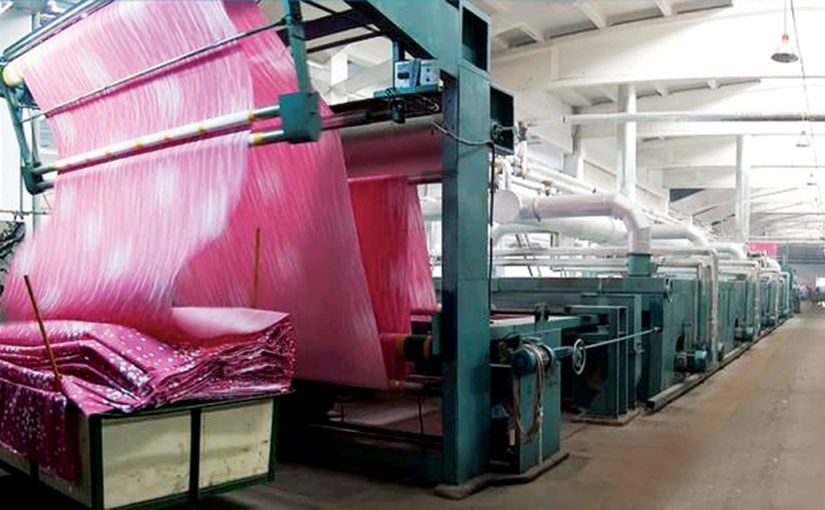Indian textile industry in the global market

The textile and apparel sector is a major sector globally. Since the initial stages of global industrialisation, this sector has remained at the forefront of generating employment and has featured prominently in the export market of many developed economies.
Export
Cotton plays an important role in the Indian economy as the country’s textile industry is predominantly cotton based. India has emerged as the largest producer of cotton in the world with the production of 345 lakh bales in 2016-17 and is presently the second largest exporter after China.
End products
Cotton yarn, clothes, and apparels (mill made/ handlooms) and readymade garments form important items of Indian exports. Readymade garments account for approximately 49% of the country’s total textile exports.
Location of Manufacturing
The states of Gujarat, Maharashtra, Telengana, Andhra Pradesh, Karnataka, Madhya Pradesh, Haryana, Rajasthan, and Punjab are the major cotton producers in India. Some of the important manufacturing centres such as Ahmedabad, Solapur, Nagpur, Coimbatore, and Indore are located in areas of large scale cotton cultivation. Mumbai is the largest centre in India having 63 mills out of Maharashtra’s total of 122 mills. The growth of this industry in Coimbatore, Madurai and Tirunelveli is largely due to the availability of hydro-electricity from the Pykara Dam. Additionally, these states enjoy a humid climate which is essential for the cotton production and also have the added benefit of having a port facility.
Export Destinations
India exports cotton to mainly Bangladesh, Egypt, Taiwan, China, Pakistan, Vietnam and Sri Lanka. Various reputed foreign retailers and brands such as Carrefour, Gap, H&M, JC Penny, Levi Strauss, Macy’s, Marks & Spencer, Metro Group, Nike, Reebok, Tommy Hilfiger, and Wal-Mart import Indian textile products.
Income from Exports
Domestic textile and apparel industry contributes around 2% to India’s GDP and accounts for 14% of industrial production and 27% of the country’s foreign exchange. The Cotton Association of India says that the demand for Indian cotton is high as the prices are almost 10% lower as compared to the global average.
In 2017-18, India’s cotton production was 34.86 million bales of 170 kg each. At the end of October 2018, the total textile and clothing exports stood at Rs. 1.52 trillion, which accounts for a total of $21.95 billion. Between April and October 2018, exports of cotton raw material grew by 26.01%. It grew to $6893.05 million from $5470.20 million. The textile industry is expected to reach $223 billion by the year 2021. Out of India’s total cotton shipment of 6.2 million bales undertaken till May 2018, 20 lakh bales have been exported to Bangladesh, 10 lakh to China, 12-13 lakh bales to Vietnam, 12 lakhs to Pakistan and 7-8 lakh bales to Sri Lanka. According to the Cotton Textiles Export Promotion Council, the on-going trade war between the US and China will open up new export opportunities. In India, cotton is currently priced at about `48,000 per candy (356 kg).
Reasons for Export
The cost competitiveness of the Indian spinning and weaving industries, even with the current scale and state of technology, suggests that India will continue to be a highly competitive global player. Access to low-priced supplies of domestically produced cotton appears to be a significant advantage currently not matched by other key countries with competitive labour costs, including China and Brazil.
Advantages
Advantages in raw material and labour costs provide a foundation for India to maintain and even increase competitiveness, especially if complemented with investments to improve technology, scale, integration and quality.
Disadvantages
The major problem in the textile machinery manufacturing industry is the lack of investment in research and development, except for the few manufacturing units who have technical collaboration with reputed foreign companies. The wage cost and power cost in India are higher than Bangladesh, but lower as China and Vietnam. On the other hand, there is limited availability of skilled labour in India. There is erratic power supply in some parts of India. High lending rates affect the cost of production and hence its competitiveness. The textile industry suffers from the use of low and outdated technologies especially in the power loom sector. In general, spending on R&D, by the textile companies in India, is quite low involving a nominal presence in high value added segments and innovation driven technical textile segments.
Government Initiatives
The Amended Technology Upgradation Fund Scheme (ATUFS) includes 15% capital subsidy on eligible machinery in the garment and technical textile sector with a capital of Rs. 30 crore per individual entity. It also includes 10% capital subsidy on eligible machinery in weaving for processing, jute, silk and handloom with a capital of Rs. 20 crore per individual entity. The Scheme for Integrated Textile Parks (SITP) grant up to 40% of the textile park development project cost subject up to a ceiling of Rs. 40 crore.
The Technology Mission on Technical Textiles (TMTT) includes providing fund support for organising workshops and support for standardisation and market development support for sale to institutional buyers and for export sales.
